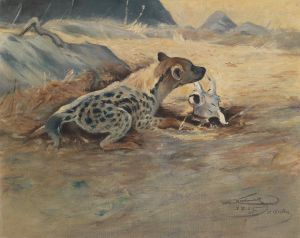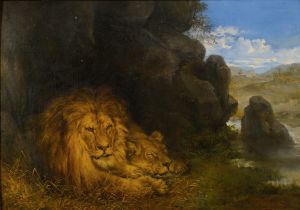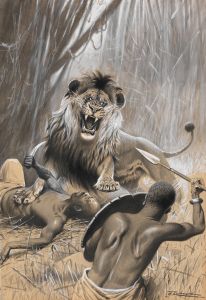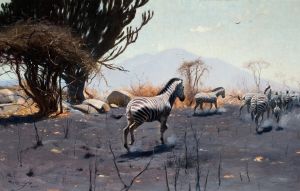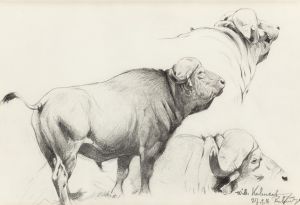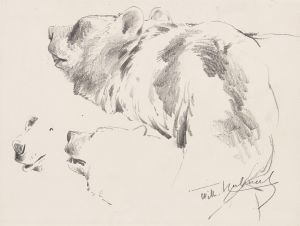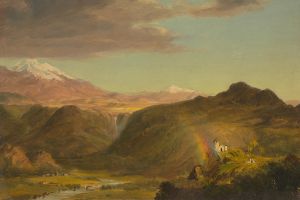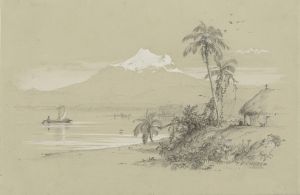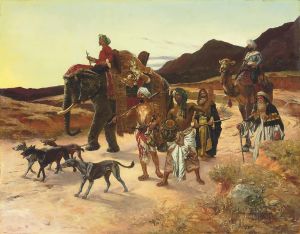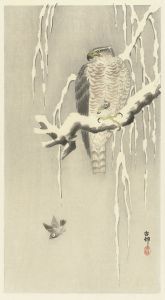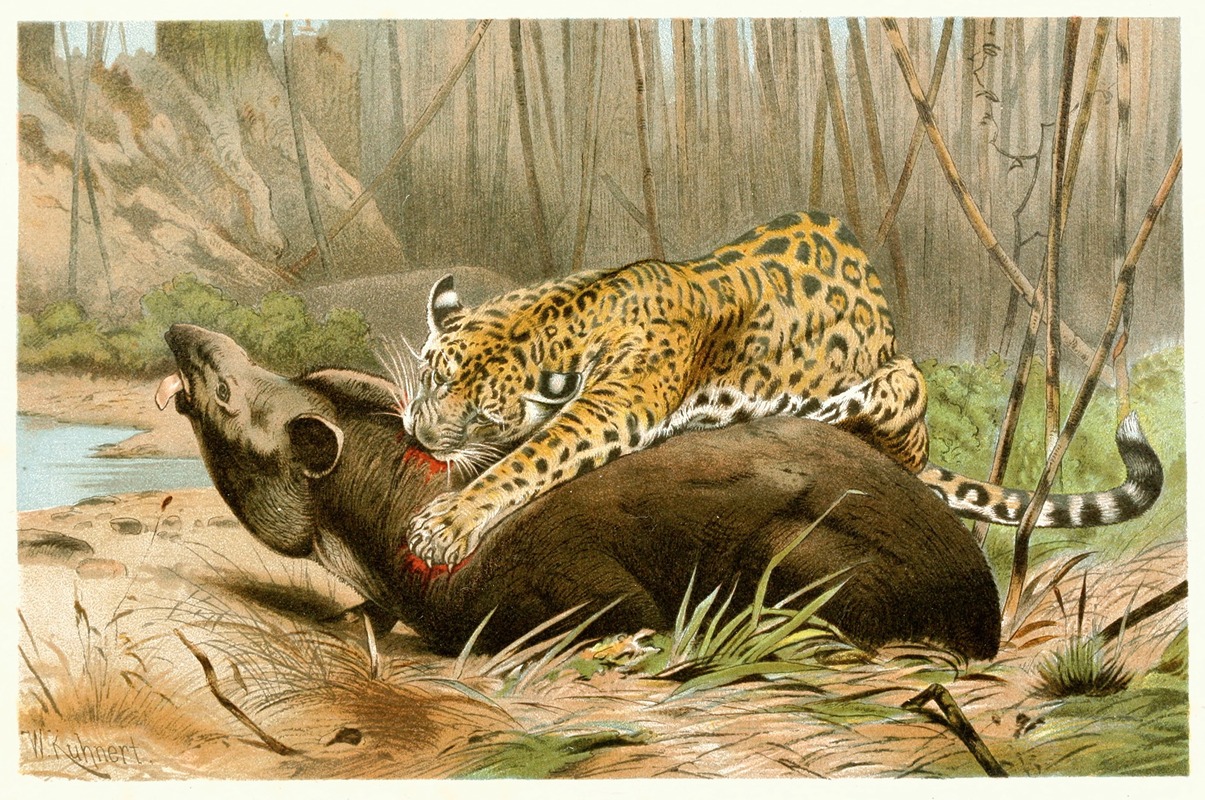
Jaguar killing Tapir
A hand-painted replica of Wilhelm Kuhnert’s masterpiece Jaguar killing Tapir, meticulously crafted by professional artists to capture the true essence of the original. Each piece is created with museum-quality canvas and rare mineral pigments, carefully painted by experienced artists with delicate brushstrokes and rich, layered colors to perfectly recreate the texture of the original artwork. Unlike machine-printed reproductions, this hand-painted version brings the painting to life, infused with the artist’s emotions and skill in every stroke. Whether for personal collection or home decoration, it instantly elevates the artistic atmosphere of any space.
Wilhelm Kuhnert (1865–1926) was a renowned German painter and illustrator, celebrated for his detailed and realistic depictions of wildlife. His work primarily focused on African and Asian animals, and he is considered one of the foremost wildlife artists of his time. Kuhnert's paintings are characterized by their meticulous attention to detail and lifelike representation of animals in their natural habitats.
One of his notable works is "Jaguar Killing Tapir," which exemplifies his skill in capturing the raw and dynamic interactions within the animal kingdom. This painting portrays a dramatic scene in which a jaguar, a powerful and stealthy predator native to the Americas, is depicted in the act of attacking a tapir, a large herbivorous mammal found in the same regions. The painting is a vivid representation of the struggle for survival in the wild, a theme that Kuhnert often explored in his work.
Kuhnert's ability to render animals with anatomical precision and emotional intensity is evident in "Jaguar Killing Tapir." The jaguar is shown with its muscular body poised for the attack, its eyes focused intently on its prey. The tapir, on the other hand, is depicted in a moment of vulnerability, emphasizing the harsh realities of the natural world. The background of the painting, likely a dense jungle or forest setting, adds to the authenticity and drama of the scene.
Kuhnert's work was informed by his extensive travels and firsthand observations of wildlife. Although he is best known for his African wildlife paintings, his interest in animals extended to other continents as well. His dedication to studying animals in their natural environments allowed him to create paintings that were not only artistically impressive but also scientifically accurate.
"Jaguar Killing Tapir" reflects Kuhnert's broader artistic philosophy, which was to portray animals with respect and admiration, capturing their beauty and power without anthropomorphizing them. His paintings often served as a bridge between art and science, providing valuable insights into the behavior and anatomy of the animals he depicted.
Kuhnert's contributions to wildlife art have had a lasting impact, influencing subsequent generations of artists and naturalists. His works continue to be celebrated for their artistic merit and their role in raising awareness about the diversity and complexity of the animal world. "Jaguar Killing Tapir," like many of his other paintings, remains a testament to his skill and dedication as an artist who sought to bring the wonders of the natural world to a wider audience.
While specific details about the creation and current location of "Jaguar Killing Tapir" are not widely documented, the painting is representative of Kuhnert's oeuvre and his commitment to capturing the essence of wildlife with both accuracy and artistry. His legacy endures through his paintings, which continue to inspire appreciation and understanding of the natural world.





